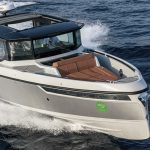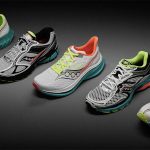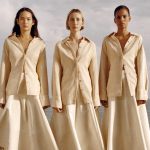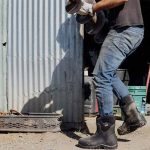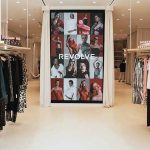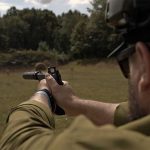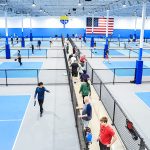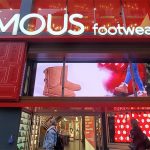While many vendors and retailers at the Fly Fishing Retailer show in
Denver last week were quite happy with attendance and general mood on
the floor, the show, according to many of the long-time show goers, was
still a shadow of its former self. However, FFR 2007 was also seen as a
vast improvement over last year in terms of attendance, with a 21%
increase in buyers at the show to nearly 1,200 and a 34% increase in
total attendance. Like in many parts of the outdoor industry, show
timing and the buying cycles are major issues at FFR. For many
retailers, July and August are the busiest times of the season, but at
the same time, vendors are requiring pre-season orders in July, so a
September show loses some importance.
Some vendors start the process even earlier and have already closed
programs, placed orders to factories and have already started shipping
to retailers some of the same product shown in their booths at the
show. As such, FFR has become more of a media show for many
vendors. One vendor pointed out that they have 100+ appointments with
media at the show and will probably see 75 vendors. In spite of
this, many of the newer and more niche players in the industry are
still receiving orders from retailers at the show. Retailers are
accustomed to the later timing of FFR and leave some open to buy open
for new brands and unique new products.
Orvis was one of the few
larger, established fly fishing brands to see retailers writing orders
at the show, likely due to some innovative new rod technology the
company launched in Denver this year. Management was also quite pleased
with the timing this year compared to last, and universally received
better responses from their independent retailers. The biggest business
concern at Orvis currently is foreign invasive species overtaking fly
fishing habitats and to combat this, the company is donating 5% of
their pre-tax profits to non-profits that are working on this issue.
Simms saw this years FFR as a
strong improvement from last year, but management still pointed out
that their reps have been on the road with new product in-hand since
August 10. While the show was stronger than 2006, it was described as
more of a “meet and greet” event than a place to write
orders.
The real value for Simms was in showing retailers how their brand can
be presented and merchandised with their new POP and re-designed retail
display units. The company is also seeing more year-round business from
their retailers with salt water fly fishing gaining popularity. This
segment is driving more winter trips to the Caribbean and Mexico and
more winter sales in the U.S.
R.L. Winston is seeing a
similar trend and has focused on developing new technologies to enhance
their salt water rod offering. Whereas the company was primarily known
for making very aesthetic trout rods in the past, it is now working to
become a technology leader.
Sage was one of two companies
on the show floor to bring up sustainability as a serious business
effort. While many companies were addressing the invasive species issue
as a business threat, Sage is dealing with this and looking ahead to
more long-tern sustainability issues. Currently the company is taking
smaller steps, like reducing the page count of their catalog and going
paperless wherever possible, but it has plans to increase its efforts
every year.
Patagonia was the other company
on the floor with sustainability as a major message. The company is
also getting much more serious about their fly fishing business with a
new product design team dedicated to the sport and a dedicated product
line. While there is still a good percentage of cross over
between the outdoor line and the fishing line especially in apparel
and travel gear there are more fishing-dedicated products in the line
than ever before.
Cloudveil is also dedicating
more of their line to fly fishing. Management said that the extension
into the category has created some good growth for the company, but
their outdoor line is growing faster. Of particular note is
Cloudveils extension into footwear this year with a fly
fishing-specific boot that uses Five Tens Stealth rubber. The
key to Cloudveils growth in fly fishing has been their lifestyle
offering, which many other FFR brands dont touch.
Bite Footwear was also
attending FFR this year as one of only a few pure footwear brands on
the floor. Following the companys acquisition by Crocs earlier this
year, the company is in the process of integrating Crocs Crosslite
technology into its products, primarily in the footbeds.
Chota is continuing to push their innovation with value business
platform and is seeing strong international expansion because of it.
The company has opened up dozens of international distributors lately
from Iceland down to New Zealand.
Ex Officio is looking to tap
into the womens market in fly fishing and is seeing some success. The
company has a full line of womens specific fly fishing apparel with
the same ventilation, UV protection and quick drying technology as in
the mens line. ExO is also bringing technologies like laser cutting
and welding to the fly fishing market.
Hodgeman Waders is also looking
at the womens market as a are for growth with womens-specific, fitted
waders. The company continues to grow under its new parent company
Jarden Corp., and still sees the market as a growth opportunity.
Buff (the original) is seeing
its product take off in the fishing market, primarily as a means for UV
protection in salt water fly fishing. The product was recently placed
in all Bass Pro Shops and they are creating new fishing and fly-fishing
oriented designs.
Another issue brought up by many attendees was location. However, most
of the foreign delegates were happy for the fishing opportunity. Like
many trade shows in the sporting goods and outdoor industries, FFR
continues to struggle with timing issues and finding new ways to
attract retailers. While FFR is much smaller than it was in its
prime, the increased attendance added some momentum to the show this
year.

